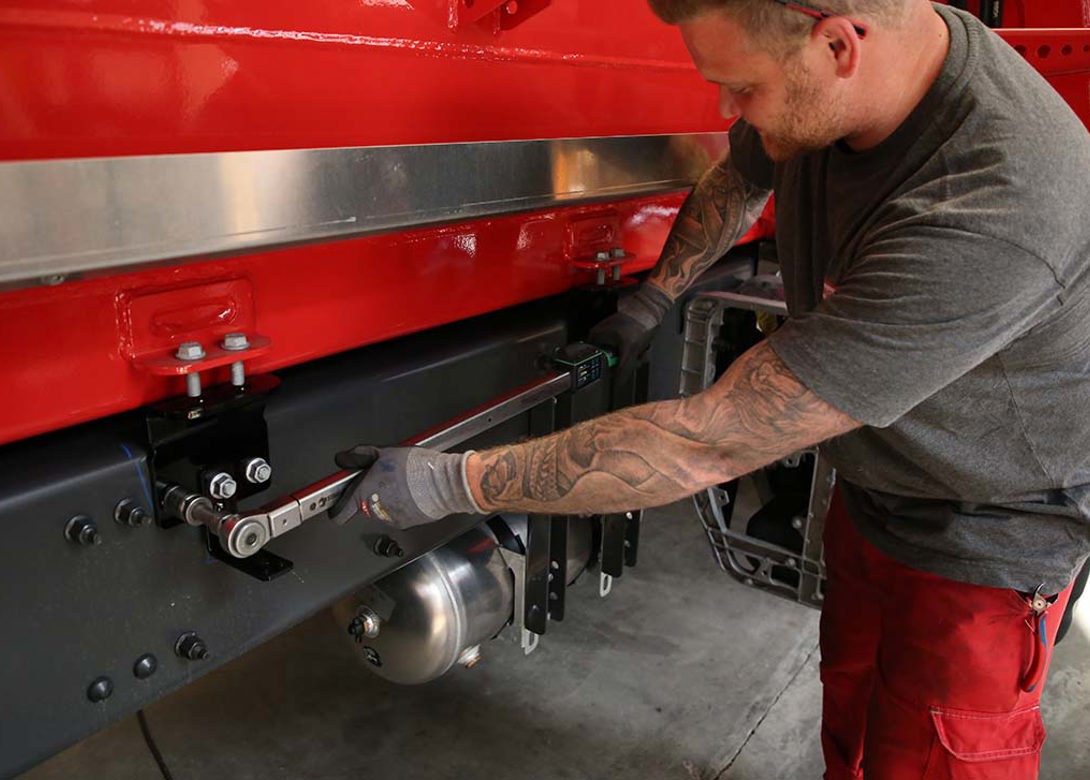
With a workforce of around 500, Rosenbauer, in Karlsruhe, Germany, builds more than 190 vehicles every year – used for firefighting and disaster relief. This requires the highest levels of quality and uncompromising dependability, which is why the company uses electromechanical radio-linked torque wrenches from Stahlwille.
In order to be able to meet the ever-increasing challenges of the future, these electromechanical radio linked torque wrenches from Stahlwille are used during production. “At the facility in Karlsruhe, Germany, a large number of bolted connections have to be carried out in a specified sequence and with a precisely defined torque,” explains Torsten Schuster, production planner international/head of work preparation at Rosenbauer Karlsruhe GmbH & Co KG.
In this context, each individual employee has a high degree of responsibility for self-monitoring. An incorrectly tightened fastener can have an effect on the functioning of the entire system – with consequences in terms of the costs of warranty services and complaints. This deficit can be counteracted by the use of digitally defined fastener tightening processes, because this makes the learning curve manageable and guides the worker accurately through the specified procedures.
“With Industry 4.0 solutions from Stahlwille Eduard Wille GmbH & Co KG, we are making fastener tightening operations during assembly safer and more dependable. The tools also enable workers to log data quickly and easily at the same time. This enables us to offer our customers verifiable quality at a consistently high-level,” says Torsten.
There are now three workstations at Rosenbauer’s Karlsruhe site and another in Italy that are equipped with the Manoskop 766 Daptiq torque wrench. Stahlwille points out that this tool is the only one on the market that works electromechanically – it measures digitally, can be integrated wirelessly by WiFi and can both receive and transmit data.
At Rosenbauer, the torque wrenches are directly integrated in the ProTight worker guidance system. When a fastener tightening process is initiated, the tool receives its data from the worker guidance system via radio transmission and the required torque is set automatically. In the specific case of Rosenbauer in Karlsruhe, the processing sequence and the assembly points are displayed on a large format monitor beside the workstation. The wrench signals three times whether the tightening operation has been carried out correctly and the specified target torque has been reached – by means of an LED traffic light system, the digital display and the familiar click. The system also detects whether fasteners have been overlooked or tightened twice. Error messages cannot be ignored.

Having spent a decade in the fastener industry experiencing every facet – from steel mills, fastener manufacturers, wholesalers, distributors, as well as machinery builders and plating + coating companies, Claire has developed an in-depth knowledge of all things fasteners.
Alongside visiting numerous companies, exhibitions and conferences around the world, Claire has also interviewed high profile figures – focusing on key topics impacting the sector and making sure readers stay up to date with the latest developments within the industry.





